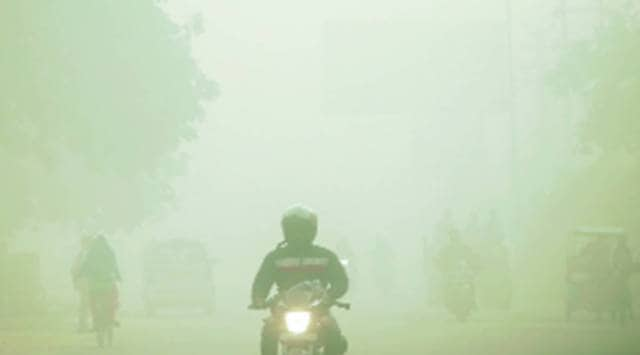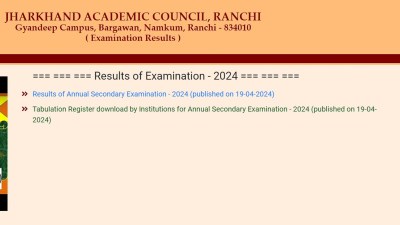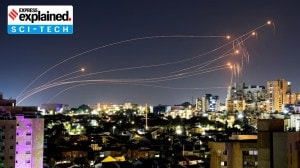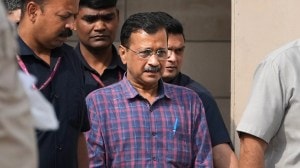- India
- International
Stubble burning, crackers on Diwali and dip in mercury made Delhi’s air quality worse than last November
Delhi also recorded nine severe air quality days this past month — highest since November 2016, when there were 10. Last November, there were seven such days.
 SAFAR data shows that in 2019, between October 8 and December 9, the share of stubble burning to PM 2.5 levels in Delhi was higher than 15% on six days. (Express photo by Praveen Khanna)
SAFAR data shows that in 2019, between October 8 and December 9, the share of stubble burning to PM 2.5 levels in Delhi was higher than 15% on six days. (Express photo by Praveen Khanna)Higher stubble burning cases, emissions around Diwali and below-normal minimum temperatures made Delhi’s air quality this November worse than the same period last year. The average air quality index (AQI) last month was 328, higher than 312 recorded in November 2019, as per data from the Central Pollution Control Board. However, it is lower than November 2018.
Delhi also recorded nine severe air quality days this past month — highest since November 2016, when there were 10. Last November, there were seven such days.
Air pollution experts noted that AQI this November was not significantly higher than the previous year, adding that one of the factors was celebration of Diwali in November this year, as compared to the end of October last year. V K Soni, head of the Environment Monitoring and Research Centre (EMRC) at India Meteorological Department (IMD), said, “Preliminary reasons behind this could be higher stubble burning cases this year as compared to last year. Emissions around Diwali are also a factor, along with unfavourable meteorological conditions for dispersion of pollutants.”
Punjab recorded over 76,000 fire counts between September 21 and November 24 this year, highest since 2016 when there were over 81,000 cases, as per data from the Punjab Remote Sensing Centre. Last year, there were over 55,000 fire counts in the same period.
While Delhi-NCR has its own regional sources of emissions, smoke from stubble burning contributes significantly to air pollution during winters in Delhi. Evaluation by the Ministry of Earth Sciences’ (MoES) air quality monitor SAFAR shows peak contribution of stubble burning to Delhi’s PM 2.5 levels was 42% this season, on November 5. Last year, the peak was 44% while it was 56% the year before.

An MoES official said, “Stubble burning started early this year. As the number fire counts were high, the contribution was high for several days.”
SAFAR data shows that in 2019, between October 8 and December 9, the share of stubble burning to PM 2.5 levels in Delhi was higher than 15% on six days. So far this year, since October 10, it was higher than 15% on 23 days. In November alone, it was higher than 15% on 12 days.
Diwali was celebrated on November 14 this time, when Delhi’s AQI touched 414, the worst since Diwali day in 2016. Clear violations of the firecracker ban were noted in Delhi. However, SAFAR attributed the spike in pollution to a 32% share from stubble burning, with firecrackers contributing only “marginally” to it.
Kuldeep Srivastava, head of IMD’s regional weather forecasting centre in Delhi, said, “Minimum temperature in the city has been below normal on most days this month. Wind speed has also been calm at night, typical of the post-monsoon period in Delhi. These two factors do not help in dispersion of pollutants.”
Apr 19: Latest News
- 01
- 02
- 03
- 04
- 05






































